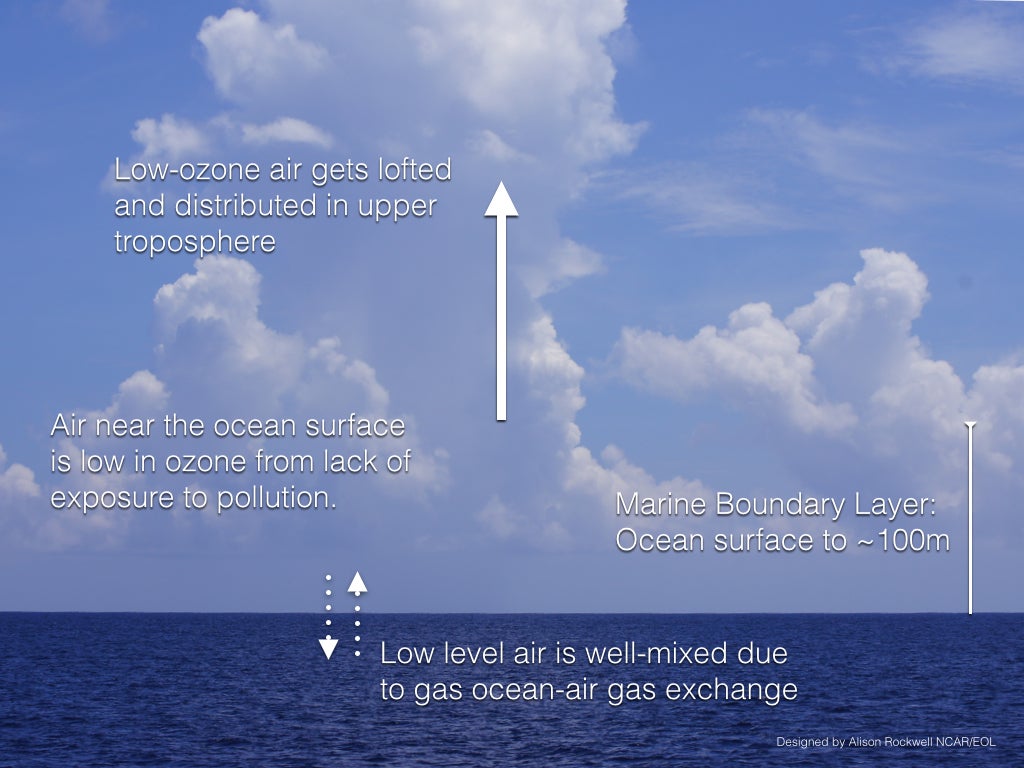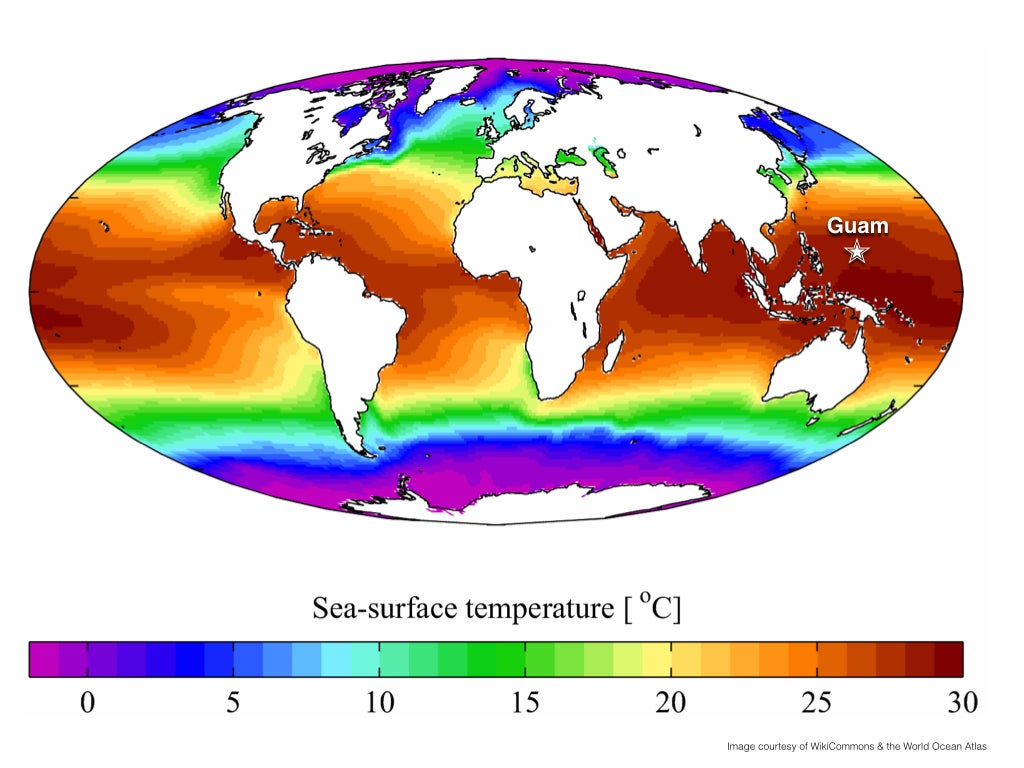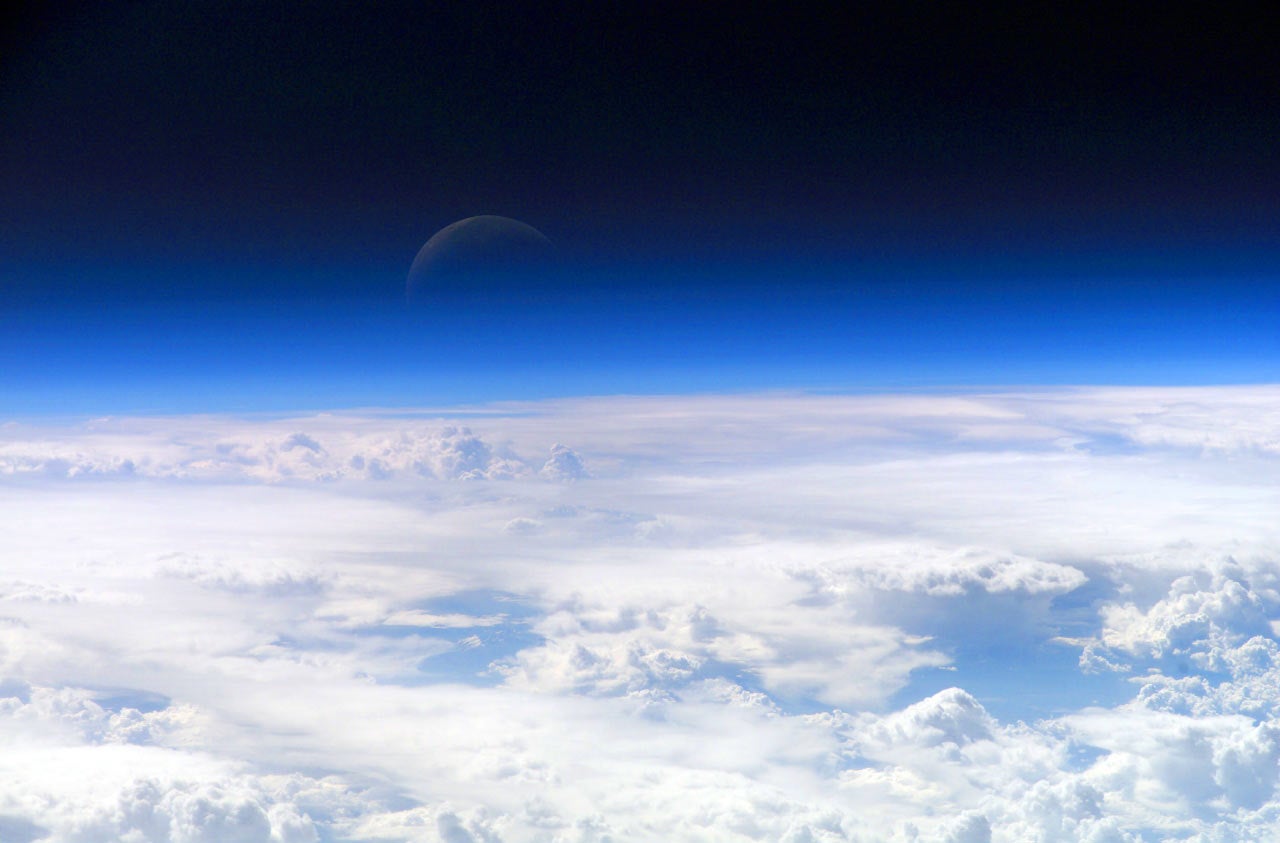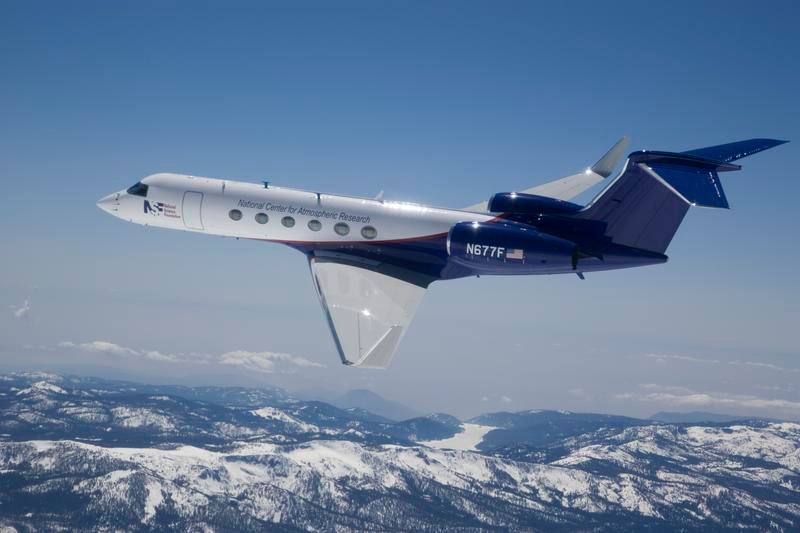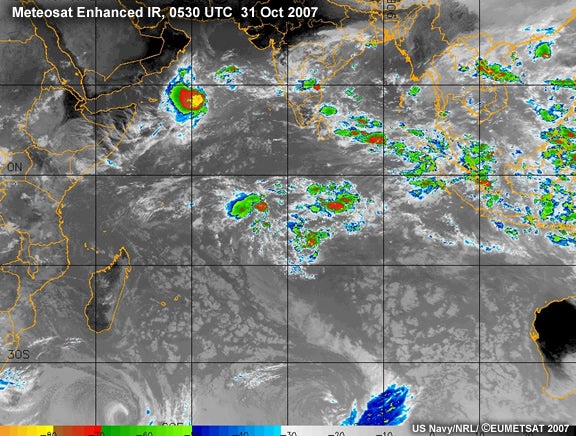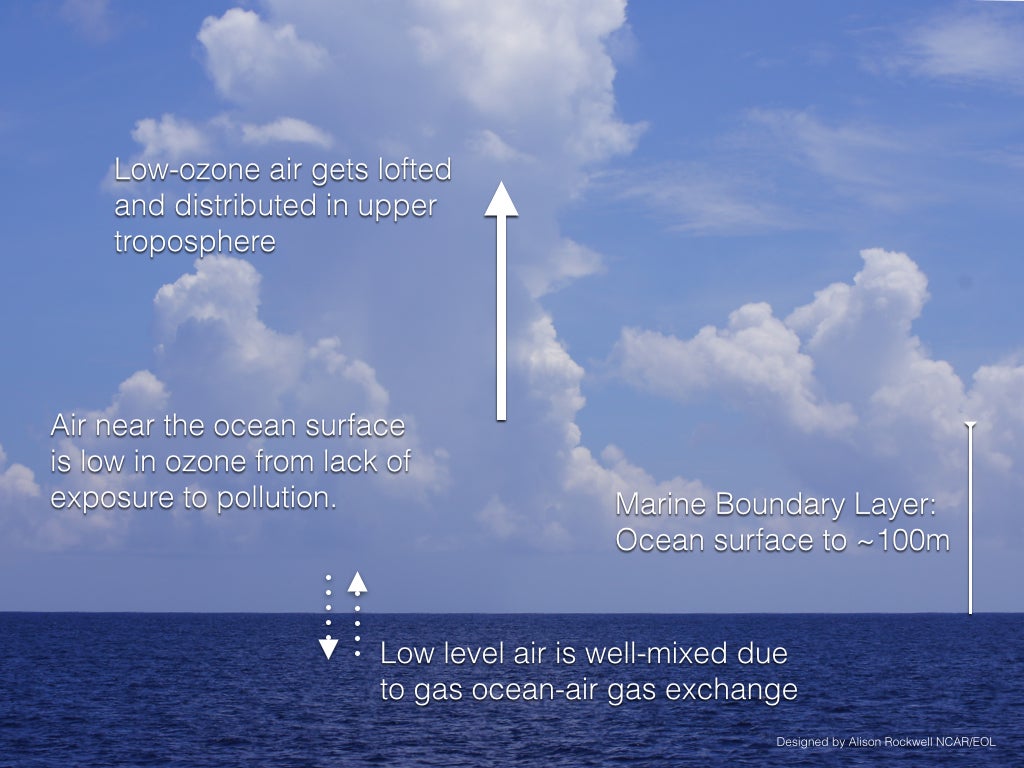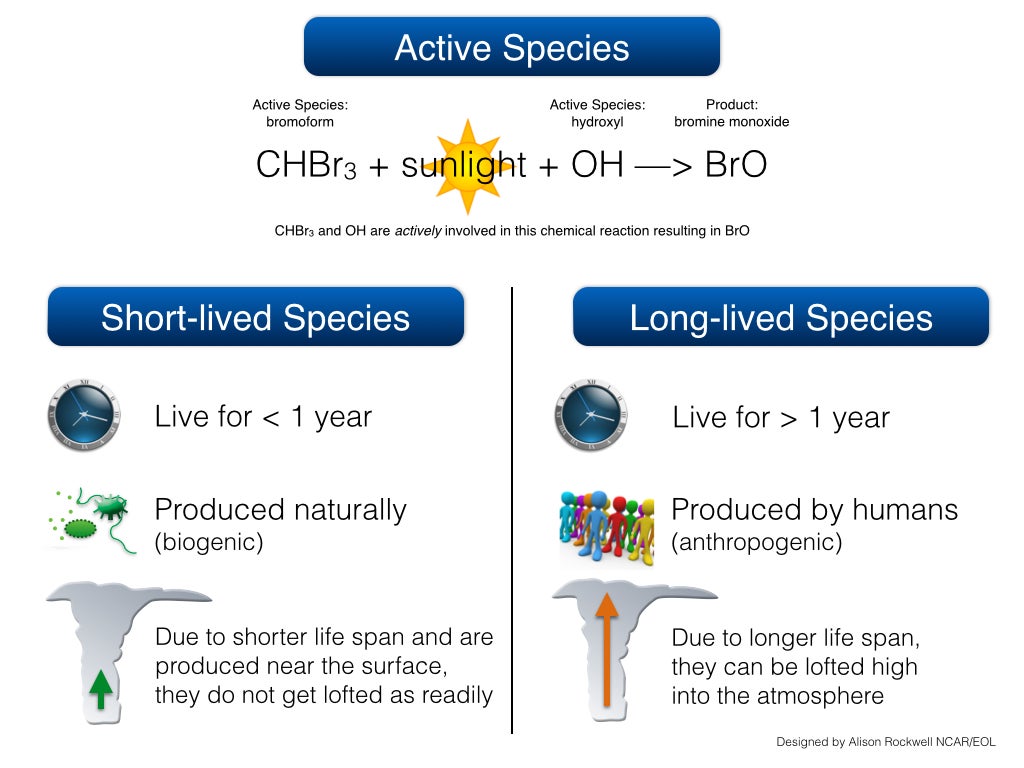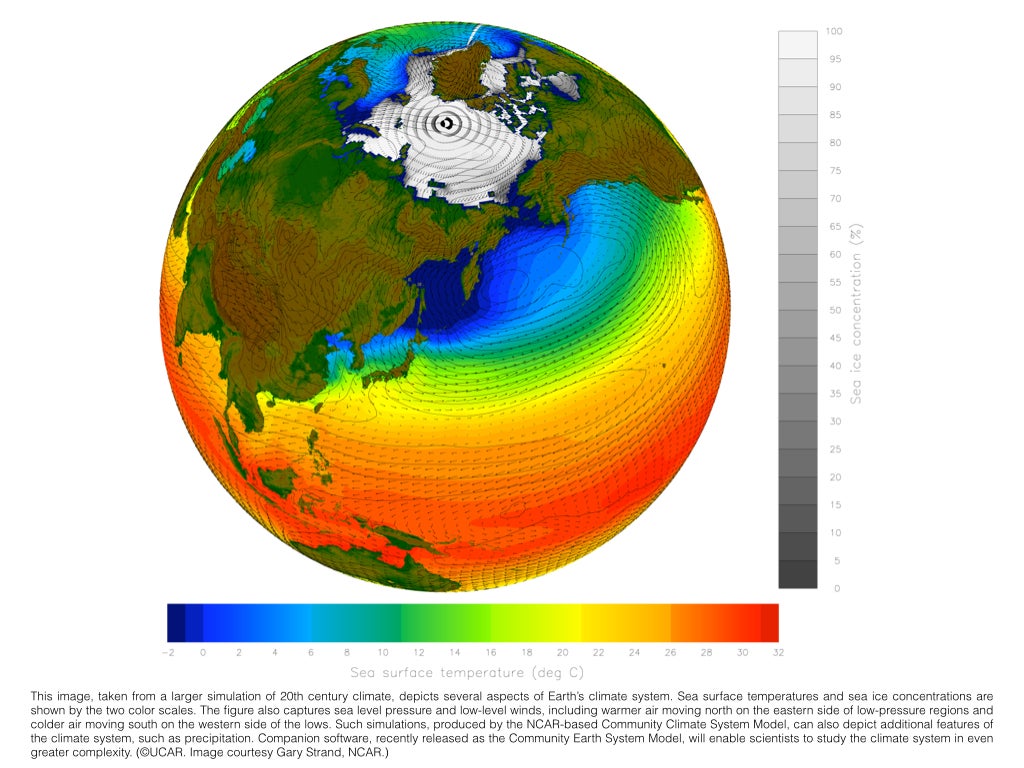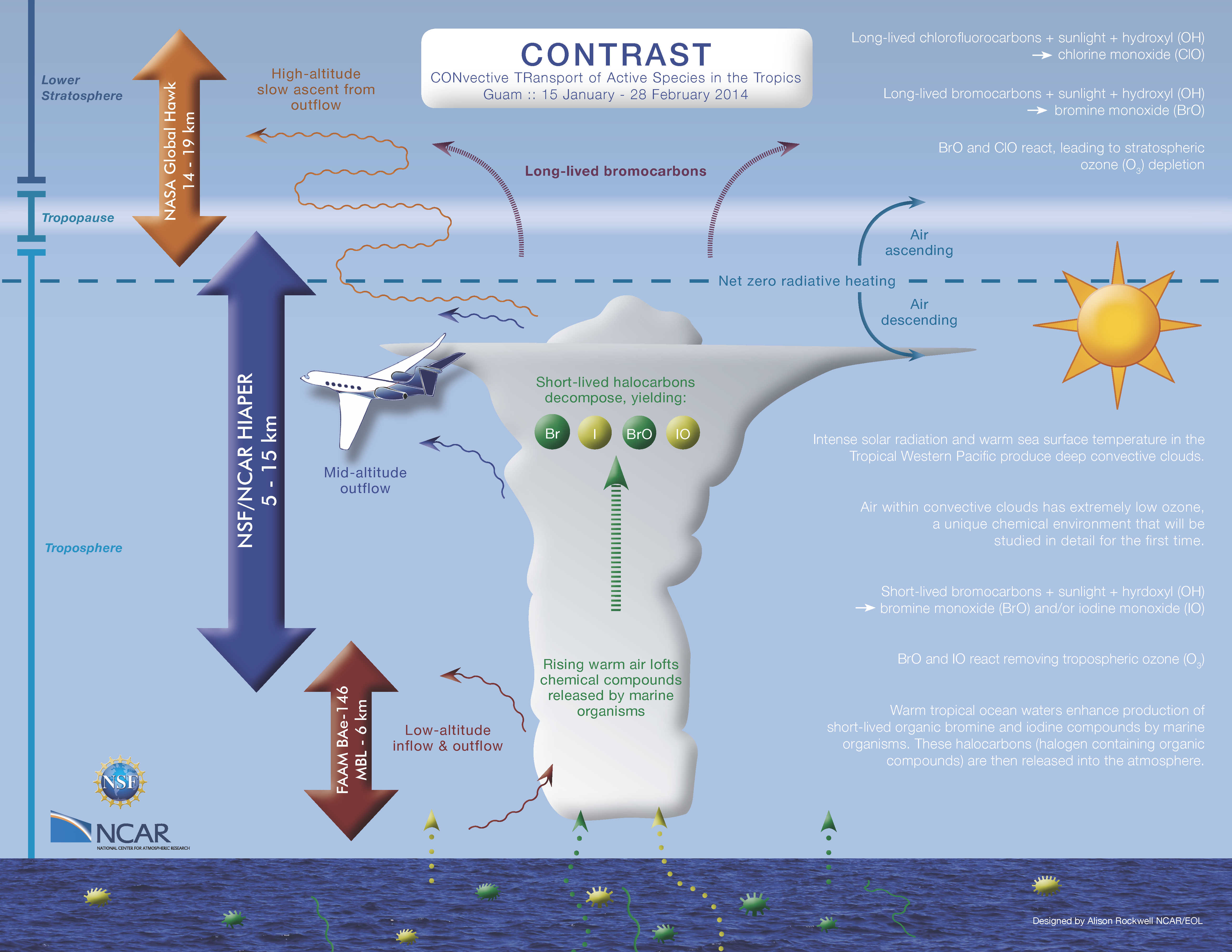What is CONTRAST?
 NSF/NCAR HIAPER research aircraft |
CONTRAST, CONvective TRansport of Active Species in the Tropics, research objectives are to quantify how large convective clouds redistribute atmospheric gases in the tropical atmosphere. The study will take place in Guam from 15 January - 28 February 2014.
Observations for CONTRAST will be obtained by a series of mid-altitude flights by the NSF/NCAR HIAPER research aircraft from the project base located in Guam. Two collaborative airborne research projects will be conducted concurrently with CONTRAST. NASA will fly their high-altitude Global Hawk (GH) research aircraft during their project, ATTREX, and the British organization FAAM will fly their low-altitude BAe-146 aircraft during their project, CAST. The BAe-146, HIAPER, and GH will together span the marine boundary layer to the tropical lower stratosphere, providing unprecedented detail on the composition of the tropical atmosphere.
The most extensive deep clouds in Earth’s climate system develop in the Tropical Western Pacific (TWP) during the Northern Hemisphere winter due to increased availability of heat and moisture. The laws of physics dictate that warm air rises, termed convection. Tropical convection rapidly transports air from just above the ocean surface to high altitudes. These clouds pack sufficient energy that, on occasion, they punch through the boundary that separates the troposphere, the lowest atmospheric layer, from the overlying stratosphere.
What are the societal benefits of this study?
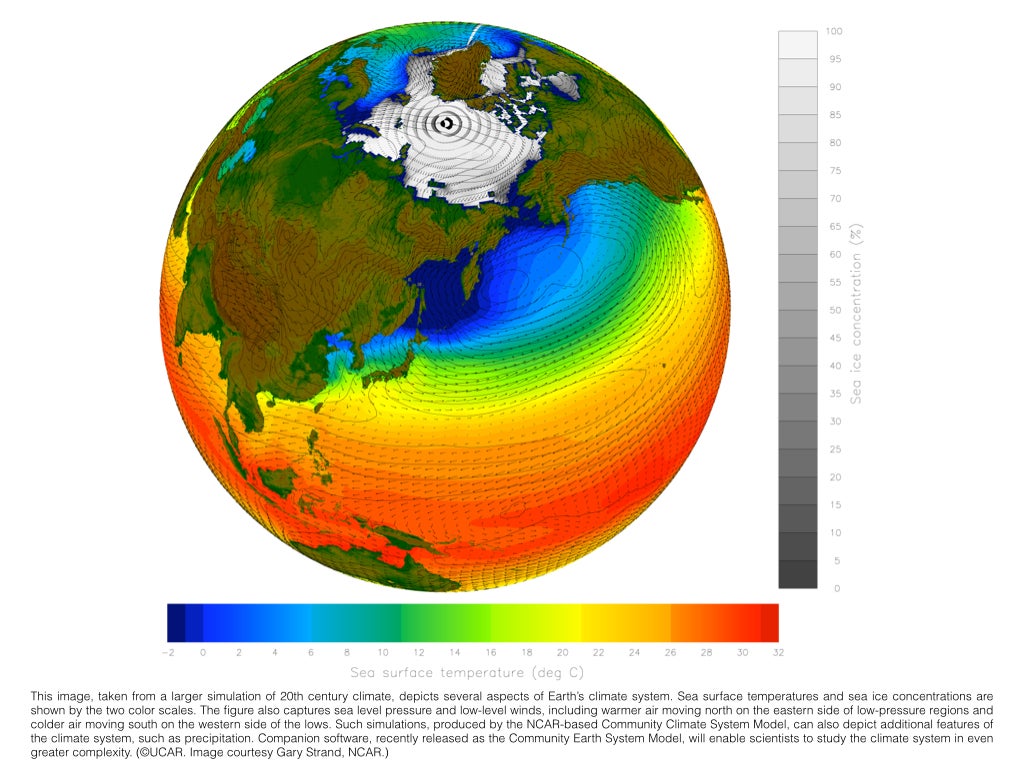 NCAR Community Earth System Model (CESM) Click image to enlarge |
Scientists have long been interested in the vertical lofting of atmospheric gases produced by ocean organisms and the chemical fate of these compounds as they decompose in the upper troposphere and lower stratosphere. Convection together with chemical processing in the TWP controls the composition of the sub-tropical global troposphere as well as air that enters and is distributed into the lower stratosphere. Understanding these processes will improve modeling simulations of interactions between ocean biology, atmospheric composition, and climate change.
What are active species, short-lived species, and long-lived species and their significance in this study?
Active Species
Active species denotes an atmospheric chemical compound, also called a species, that actively participates in a chemical reaction.
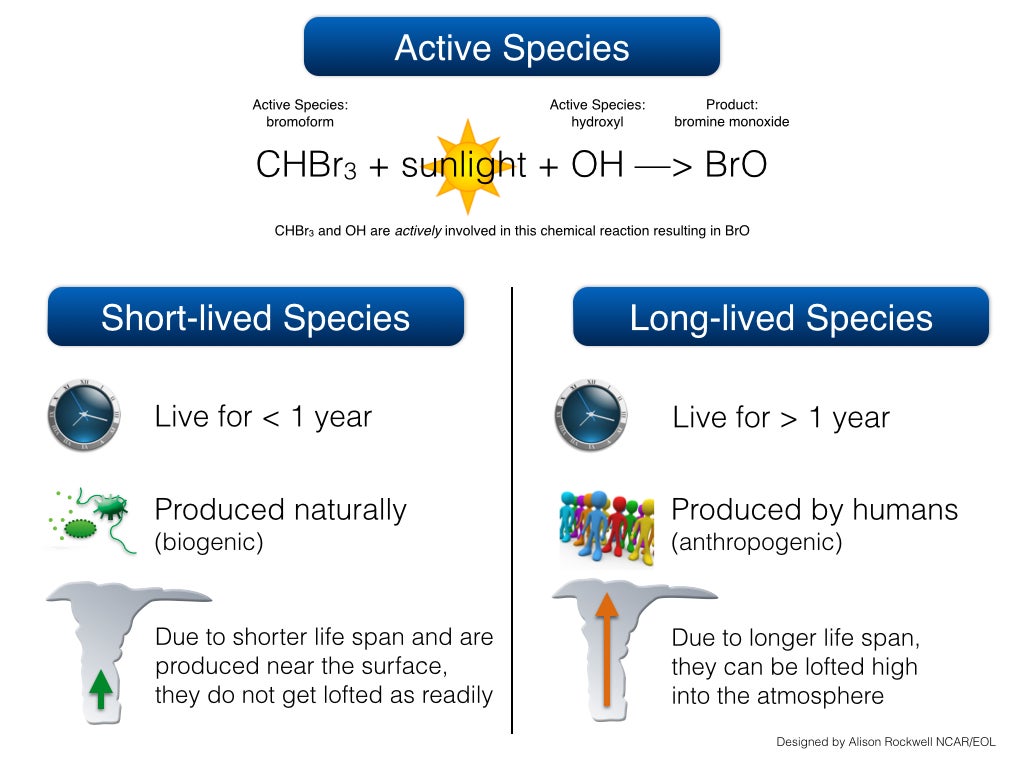 Types of chemical species Click image to enlarge |
Short-lived Species
Short-lived species generally have lifetimes with regards to loss in the atmosphere of a year or less. Generally short-lived species are produced by biological processes in the ocean. Most short-lived species do not make it intact to the stratosphere UNLESS they are lofted rapidly, most likely by convection, to high altitudes. Of course, there are exceptions to this generalization.
Long-lived Species
Long-lived species generally make it intact to the stratosphere, the atmospheric layer just above the troposphere. Since
long-lived species take more than a year to decompose, this usually provides enough time for these compounds to reach the stratosphere. Many long-lived species are produced by human activity, also called anthropogenic sources.
Significance of Chemical Type for this Study
For many years, scientists believed long-lived halocarbons such as CFCs, halons, etc were the primary sources of stratospheric halogens (the halogen family is fluorine (F), chlorine (Cl), bromine (Br), and iodine (I), but generally focused only on Cl, Br, and I). It is well established that one type of long-lived chlorocarbon produced by oceanic processes, methyl chloroform, also contributes to the stratospheric chlorine burden.
Note: "Organic" means a compound that has a carbon attached, and we call any halogen w/ a carbon a "halocarbon".
For a long time some have suspected that short-lived bromocarbons contribute a significant component to the stratospheric bromine burden. But the exact amount is uncertain and many of the computer simulations of stratospheric ozone neglect this source. Of course, the stratospheric ozone layer protects the surface from harmful UV radiation. Halogens from very short lived organic compounds have the potential to affect the abundance of ozone in the stratospheric ozone layer. Even though these compounds are natural, their products (i.e., bromine gases) can interact with other anthropogenic compounds (i.e., chlorine gases) to accelerate the harmful effects of the human derived gases. It is therefore important to quantify how much stratospheric bromine is supplied by short-lived bromocarbons.
The halogens that play an important role in the active species component of atmospheric chemistry are chlorine (Cl), and bromine (Br), and iodine (I). Bromine has been emphasized above because there is more evidence that biogenic processes in the oceans play a significant role for the global atmospheric burden of this member of the halogen family. CONTRAST will also measure a wide range of Cl and I bearing halogen compounds, providing the framework for defining the role of ocean biology on the atmospheric burden of all active halogen species.
Why is CONTRAST based in Guam and the Tropical Western Pacific (TWP)?
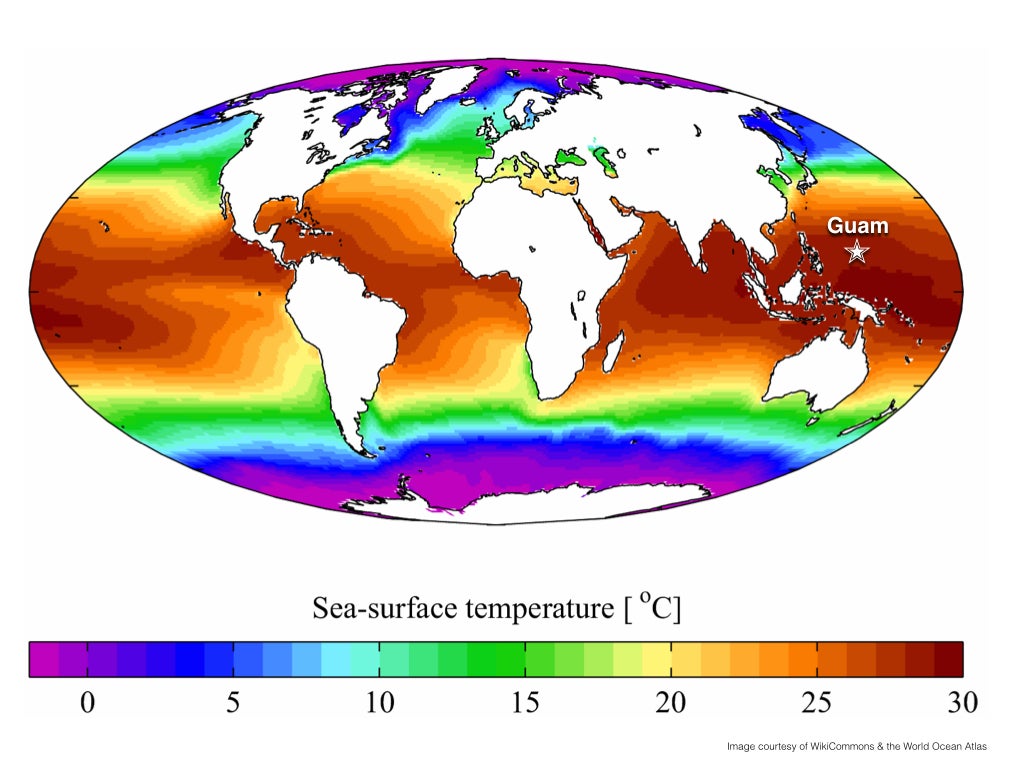 Average global sea surface temperature Click image to enlarge |
As noted above, most short-lived species do not make it intact to the stratosphere unless they are lofted rapidly, to high altitudes. The most efficient method for short-lived species to travel to high altitudes is through deep convective clouds.
The Tropical Western Pacific (TWP), the region near Guam, typically has the the warmest sea surface temperatures, which leads to more energetic cloud systems than anywhere else on planet Earth.
Convective clouds develop through a sequence of events:
- Incoming solar radiation heats the surface of the Earth, warming the ground-level air and ocean surface, causing water to evaporate into the air
- That warm, moist air then rises, creating upward air movement and bringing with it gases and chemicals from those lower levels
- As that moist air rises, it cools and condenses - creating many, tiny cloud droplets
- Convection is a key aspect to this study because it provides the vertical transport of air and chemicals from the lower levels of the troposphere to the upper levels
Why is the research conducted in January and February?
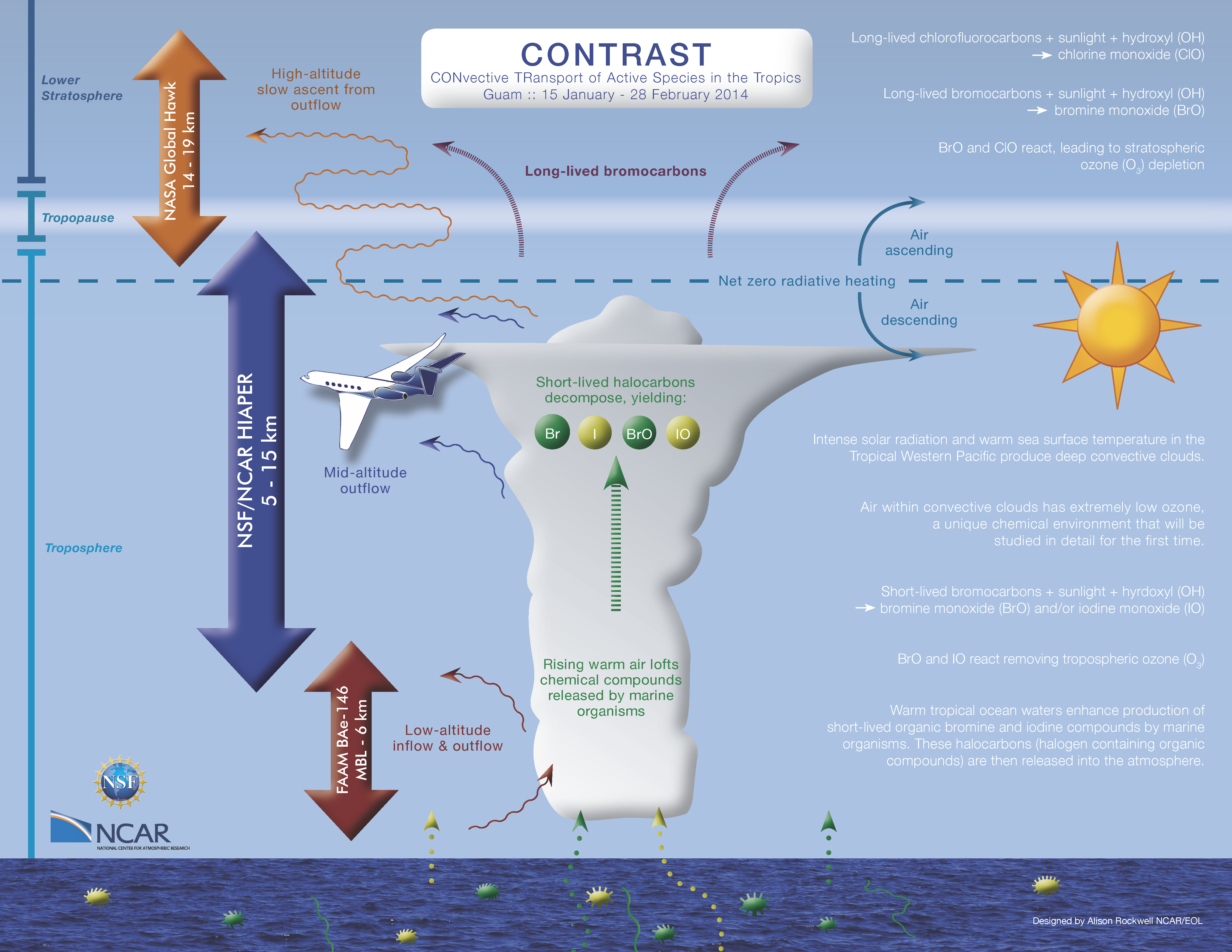 Learn more about CONTRAST Click image to enlarge |
The Tropical Western Pacific is characterized by strong convection (lots of energetic clouds) during January - February and the boundary between the troposphere and stratosphere, the so-called tropopause, is typically colder during this time period than any other time of the year.
NASA's collaborative project, ATTREX, is aiming to sample the tropopause when it is coldest, because this condition is the determining factor for the abundance of stratospheric H2O. Water vapor is a greenhouse gas and can lead to additional warming. Quantifying it is essential to accurate modeling of the climate system.
HIAPER is able to fly as high as the upper troposphere, sometimes reaching the lower tropopause. The NASA Global Hawk, the aircraft flying in ATTREX, is able to fly at altitudes that reach into the stratosphere. CONTRAST will take place during the same season as ATTREX, enabling air sampled by HIAPER in the upper troposphere to be measured later, following ascent to the stratosphere, by instruments on board the NASA GH. The other collaborative mission, British sponsored CAST, will fly an aircraft (BAe-146) at very low altitude during the same time to characterize the composition of air at the base of convection (the so-called marine boundary layer, which is below the bottom of most clouds).
Why is there low ozone (O3) in the TWP?
Air near the ocean surface of the TWP generally has very low levels of ozone, because this region has not been exposed to pollution (i.e., smog that contains ozone). Also, the ocean surface is efficient at removing ozone from the atmosphere through gas exchange. This lower region of the atmosphere, from the surface to about 100 meters, is called the marine boundary layer (MBL) and is where a large percentage of mixing and exchanging of gasses occur.
Convective clouds, or large clouds developed by the heating of the Earth's surface, forces the air upwards, bringing with it and spreading low-ozone conditions throughout the tropical oceanic region.
Most interestingly, the halogens released to the tropical troposphere by very short lived halocarbons could be playing a role in maintaining the low levels of ozone in this region. If so, this is a natural process but one that could vary as the climate changes. CONTRAST will define the role of halogens for maintaining low levels of tropospheric ozone in the tropics.
Dataset Documentation Requirements
CONTRAST Data Submission Instructions
Letter from the Project Manager
CONTRAST Digital Camera Images and Movie Notes
CONTRAST Project Manager Report
Quick Questions for CONTRAST PIs
CONTRAST Educational Resources
